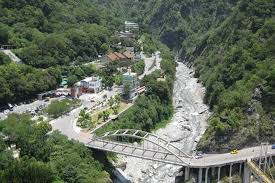As protests hit Upper Siang project, NHPC to fast-track selection of site

Yingkiong, Arunachal Pradesh — Tension is rising in Upper Siang as local communities protest against the National Hydroelectric Power Corporation’s (NHPC) push to build a massive dam in the region. Despite this, NHPC is moving fast to finalize the dam site, citing national interest and energy needs.
Local Voices Say No
Hundreds of villagers from the Adi tribe are rallying against the hydropower project. They argue that NHPC began surveys on their land without proper consent. In many areas, authorities sent in security forces to accompany survey teams. This move has triggered mistrust and strong opposition.
“We were never asked for permission,” said a resident of Yingkiong. “They arrived with police and started marking our land.”
The project targets areas like Dite Dime, Parong, and Uggeng—places rich in culture and community heritage. Locals fear these sites could be submerged or destroyed if the dam is built.
What’s at Stake?
The dam is expected to generate over 11,000 megawatts of electricity, making it one of India’s largest hydro projects. However, the cost may be too high for the people living in the region.
Over 300 villages could face displacement. Families risk losing homes, farmland, and ancestral burial grounds. In addition, activists warn that the project may damage forests, threaten wildlife, and disturb a delicate ecological balance.
Despite these concerns, NHPC insists the project is crucial. Officials say India needs to counter China’s upstream dams on the Brahmaputra River. According to them, without a dam, India could lose control over water flow in the region.
Security Forces and Surveys
While protests continue, NHPC has decided to speed up the selection of the final site. State authorities have deployed Central Armed Police Forces (CAPF) to secure survey teams.
This move has intensified public anger. Many see the deployment as a show of force rather than an attempt to understand public concerns.
Meanwhile, NHPC has begun working on its Detailed Project Report (DPR). They claim the fast-tracked process is essential for national water security and clean energy goals.
Divided Opinions
Some local leaders claim the public supports the project. Arunachal Pradesh’s Rural Development Minister, Ojing Tasing, stated that 70% of the population wants the dam. He believes the project will bring jobs, better roads, and more electricity to the region.
However, protest leaders challenge this claim. They argue that many people were never informed about the project. According to them, claiming “majority support” does not excuse ignoring those directly affected.
Promises and Reality
To reduce resistance, NHPC has promised development packages worth ₹325 crore. These include new schools, roads, and cash benefits for families.
Yet, critics call this a short-term fix. They demand proper consultation under the Forest Rights Act and the Panchayats Extension to Scheduled Areas Act (PESA). Without these steps, they argue, any development effort lacks fairness and legitimacy.
“We are not against development,” said a local teacher and protest coordinator. “We are against being left out of decisions that affect our future.”
Bigger Picture: India vs. China
This project has a geopolitical angle. India sees it as a counter to China’s massive hydropower projects on the Yarlung Tsangpo River, which becomes the Siang and then the Brahmaputra in India.
Officials worry that China might manipulate water flow during floods or dry seasons. A dam in Arunachal could give India better control and reduce such risks.
What Lies Ahead?
The situation remains tense. Survey teams continue their work, protected by armed forces. On the other hand, villagers are not backing down. Many are organizing under student bodies and civil groups to fight what they call “a silent invasion of their land.”
The future of the Upper Siang dam will likely depend on more than just engineering plans. It may also depend on whether authorities choose dialogue over force and whether they prioritize people as much as power.
Conclusion
The Upper Siang project highlights a critical challenge—how to balance development with environmental care and local rights. The NHPC might see this as a chance to secure energy and water, but for the people of Upper Siang, it is a battle to protect identity, land, and life.






